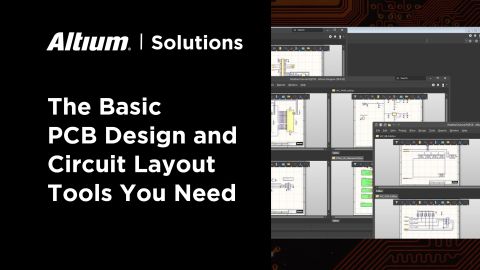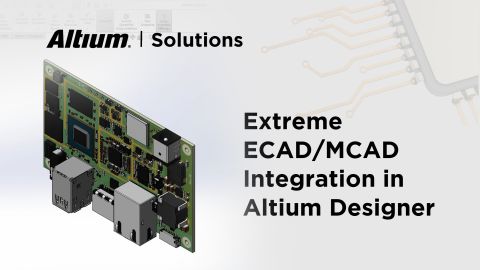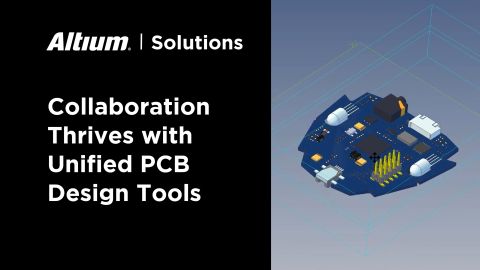Help, My PCB Enclosure is an Oven!

Some PCB enclosures are really bad for thermal management. Not all boards generate excessive amounts of heat such that they turn an enclosure into a sauna. But when it does happen, the enclosure needs to have a mechanism that allows for heat dissipation, or else the components will get too hot. There will always be a thermal gradient from hot components to a cooler enclosure surface, but that gradient is only maintained if there is some mechanism for heat to escape.
So if you want to design your PCB enclosure such that it does not become an oven for your components, here are some strategies that will help you out. There are things you can do on the enclosure, as well as on the PCB, to remove heat and maintain a desirable thermal gradient to the outside world.
What Makes an Enclosure an Oven?
There are many boards that can run quite hot, and particularly there are a few components that usually generate the lion's share of heat. These are most commonly large processors, big FETs sourcing large currents, or high-current switching regulators.
Of course, these components will heat up the air around the circuit board. If there were no enclosure, then natural convection would help cool down the system somewhat. But when you put an enclosure around the board, stagnant hot air turns your enclosure into an oven. Even without direct contact to an enclosure, the enclosure can get so hot that you cannot touch it with bare hands. This is obviously quite bad if someone is going to hold or interact with your product.
When will you know that stagnant hot air has created an oven effect in your enclosure? There are two other factors to consider:
Touch temperature. The temperature at which something is too hot for human hands to touch is always a delta from the surrounding environment. For a product in a room temperature environment, the product will be too hot to touch at approximately 45 °C. So this gives a very low delta of only 25 °C before something is too hot to touch.
Internal vs. external temperature. When the oven effect is working inside your enclosure, the temperature inside the enclosure will tend to be much hotter than the touch temperature. Even for a product in a sheet metal enclosure, the delta between touch and internal temperature could be 20 to 25 °C. For an insulating enclosure, that delta could be much larger.
Some Ideas For Reducing These Temperatures
The problem with a hot enclosure and even hotter internal temperature starts with the inability to move heat away from hot components. The components heat up the air around them, rather than heating up something else with high thermal mass (like a heatsink). Adding more copper in the PCB might help spread heat around a bit, but it does not prevent the oven effect. This is because the problem starts with components heating up the air around the board.
Some ideas to reduce this problem start both with the board design and the enclosure design.
- Grills or air holes for natural convection
- Enclosure-mounted fans for forced cooling
- A large heat sink on the board bonded to an enclosure
- Building heatsink fins onto the enclosure surface
- External air flow over the outer enclosure surfaces
All of these options are intended to pull heat away from the enclosure, remove hot air from inside the enclosure, or both. When the oven effect is happening in your product, you usually need to implement multiple ideas to cool down the device.
Take a look at some examples of rugged electronics, and you will see some of these features on the enclosure if you know what to look for.
For example, take a look at the rugged MIL-PRF embedded computer shown below. These systems integrate heat sinks directly into the enclosure through a set of fins. They could also include a high-CFM fan that pulls air around the most important components. Together, these measures help keep the systems within a safe operating temperature limit, as well as safe to touch for humans.
If you want to implement these features in your enclosure, then you need to quickly hand off design data to other engineering disciplines to get the job done. This means you need:
- A direct link to MCAD for a mechanical enclosure designer
- A direct link to a thermal simulation system like Ansys
- Ability to simulate power flow in the PCB to identify hot spots
Altium Designer® is now offering these capabilities to comprehensively evaluate boards for electrical and thermal performance via the Altium 365™ platform. MCAD users can access a PCB and design heat sinks and enclosures around hot components. Once that is finished, the entire system can be simulated by sharing the design into a thermal solver application. On the front end, a power analyzer helps analyze board hotspots that can arise due to large currents in power circuits.
We have only scratched the surface of what’s possible with Altium Designer on Altium 365. Start your free trial of Altium Designer + Altium 365 today.










